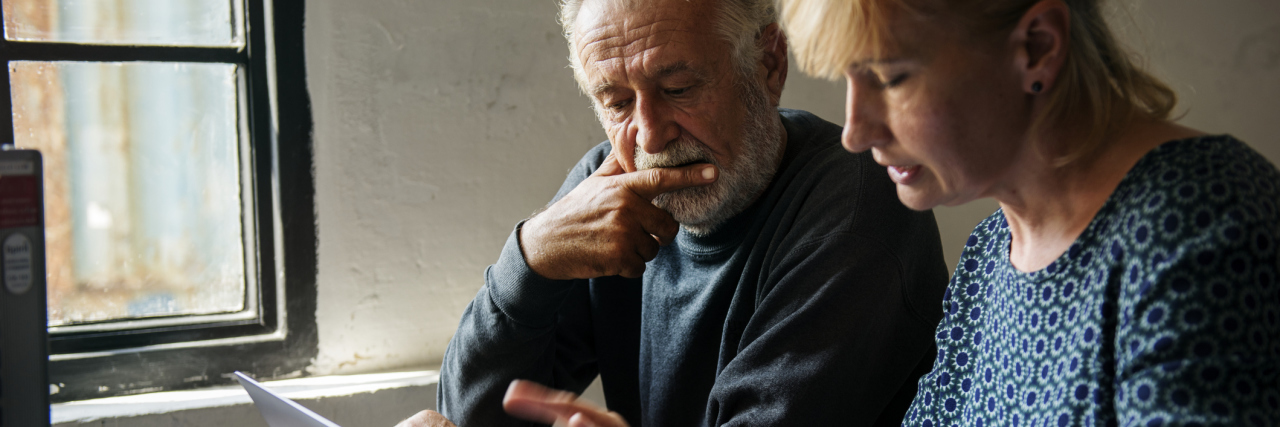It often seems that bipolar disorder, and especially bipolar depression, narrows your life down to the fewest possible choices. Try to take a shower or stay in bed. Eat a little or can’t eat at all. Cry or … cry. And that’s all true. These disorders are quite limiting.
• What is Bipolar disorder?
However, it’s also true that sometimes, we’re faced with too many choices. Right now, I am in the process of having our house rebuilt after it was destroyed by a tornado. Every other day, it seems the contractor has something new we have to pick out — paint colors, floor coverings, lighting fixtures, ceiling fans … even the color of the grout between the tiles in the kitchen, an aspect of decorating I didn’t know even existed. It’s overwhelming.
The worst was the paint colors. Sherwin Williams has a color palette about 100 pages thick, with seven different shades on every page. My husband and I have a hard time trying to pick a place to go for lunch, much less what color paint we’ll likely have to live with for the rest of our lives.
Needless to say, I dithered for a long time about the colors. The only reason that it didn’t totally immobilize me is that I employed the technique of weeding. Once I had decided on a color for each room (my husband left that largely up to me, except for his study), I began looking at the paint samples and not choosing what I liked, but pitching out what I hated. No beige anywhere. No teal, not even for the bathrooms. And so on.
What was left was a much smaller assortment of choices, which hubby and I were able to process. He always liked the lightest version of a color and I the next darker, but we were never far apart.
We got through the process in just a couple of weeks, and with only one real regret — the green we chose was yellower than we really liked, but we’ll mitigate that by covering the walls with photos, posters and art prints.
Exhaustion is another aid to making choices. I have some mobility issues and can’t walk for very long, especially on the concrete floors in home improvement warehouses. And I’ve always hated shopping, except on the internet. At some point in the process of looking and comparing, I just throw up my hands and say, “What the hell! That’ll do,” and arbitrarily pick one of the two light fixtures that have most attracted my attention. It’s not like my world will fall apart if I don’t get the one, exact light fixture that complements the room. I just need to be able to see. Then I go home, have some iced tea and put my poor, tired feet up.
One of my therapists once taught me another technique for making decisions — flipping a coin. This sounds obvious, but it’s not. The simple act of coin-flipping can work in one of two ways. Either you can leave the choice in the hands of the coin (as it were), or the result of the flip can focus your mind on what it is you really want. Any number of times, Dan and I have played, “Heads, lunch at Frisch’s; tails, Waffle House.” If it comes up tails, we often instantly realize that it was Frisch’s we were wanting all along.
Frankly, I don’t know whether it’s better to have a limited number of choices or a lot. Either way can be mind-numbing, a seemingly insoluble riddle that threatens to stymie you into making no choice at all. (Or, as the therapists tell us, “Not to decide is to decide not to.”) But it is possible to develop techniques that allow you to make those choices and continue with your life.
Of course, I know these are comparatively trivial decisions. I sure couldn’t have figured out “leave or stay” by flipping a coin, especially as seriously unmedicated and out of control as I was at the time. “Get a job or go back to college” was also an important one, but ultimately an easier one to make — I envisioned the situations and asked myself which I’d rather be doing, writing press releases or reading books. The choice was clear at that point.
Both were major turning points in my life, but one was excruciating and the other just another choice. I attribute that in large part to the medication and therapy I’d had in-between and the coping mechanisms I had learned and practiced.
Getty Images photo via Rawpixel

